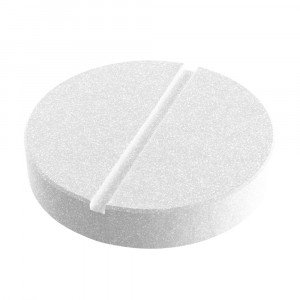 Welcome
Welcome
“May all be happy, may all be healed, may all be at peace and may no one ever suffer."
- A
- B
- C
- D
- E
- F
- G
- H
- I
- J
- K
- L
- M
- N
- O
- P
- Q
- R
- S
- T
- U
- V
- W
- X
- Y
- Z
Warfarin Sodium - Brands
Warfarin is an anticoagulant that acts by inhibiting the synthesis of vitamin K dependent clotting factors, which include Factors II, VII, IX and X. Anticoagulant effect generally occurs within 24 hours after drug administration. This reaches a maximum in 36-48 hours and is maintained for 48 hours or more after administration is stopped.
Pharmacology
Warfarin is a [vitamin K] antagonist which acts to inhibit the production of vitamin K by vitamin K epoxide reductase. The reduced form of vitamin K, vitamin KH2 is a cofactor used in the γ-carboxylation of coagulation factors VII, IX, X, and thrombin. Carboxylation induces a conformational change allowing the factors to bind Ca2+ and to phospholipid surfaces. Uncarboxylated factors VII, IX, X, and thrombin are biologically inactive and therefore serve to interrupt the coagulation cascade. The endogenous anticoagulation proteins C and S also require γ-carboxylation to function. This is particularly true in the case of thrombin which must be activated in order to form a thrombus. vitamin KH2 is converted to vitamin K epoxide as part of the γ-carboxylation reaction catalyzed by γ-glutamyl carboxylase. Vitamin K epoxide is then converted to vitamin K1 by vitamin K epoxide reductase then back to vitamin KH2 by vitamin K reductase. Warfarin binds to vitamin K epoxide reductase complex subunit 1 and irreversibly inhibits the enzyme thereby stopping the recycling of vitamin K by preventing the conversion of vitamin K epoxide to vitamin K1. This process creates a hypercoagulable state for a short time as proteins C and S degrade first with half lives of 8 and 24 hours, with the exception of factor VII which has a half life of 6 hours. Factors IX, X, and finally thrombin degrade later with half lives of 24, 36, and 50 hours resulting in a dominant anticoagulation effect. In order to reverse this anticoagulation vitamin K must be supplied, either exogenously or by removal of the vitamin K epoxide reductase inhibition, and time allowed for new coagulation factors to be synthesized. It takes approximately 2 days for new coagulation factors to be synthesized in the liver. Vitamin K2, functionally identical to vitamin K1, is synthesized by gut bacteria leading to interactions with antibiotics as elimination of these bacteria can reduce vitamin K2
To be happy, beautiful, healthy, wealthy, hale and long-lived stay with DM3S.
